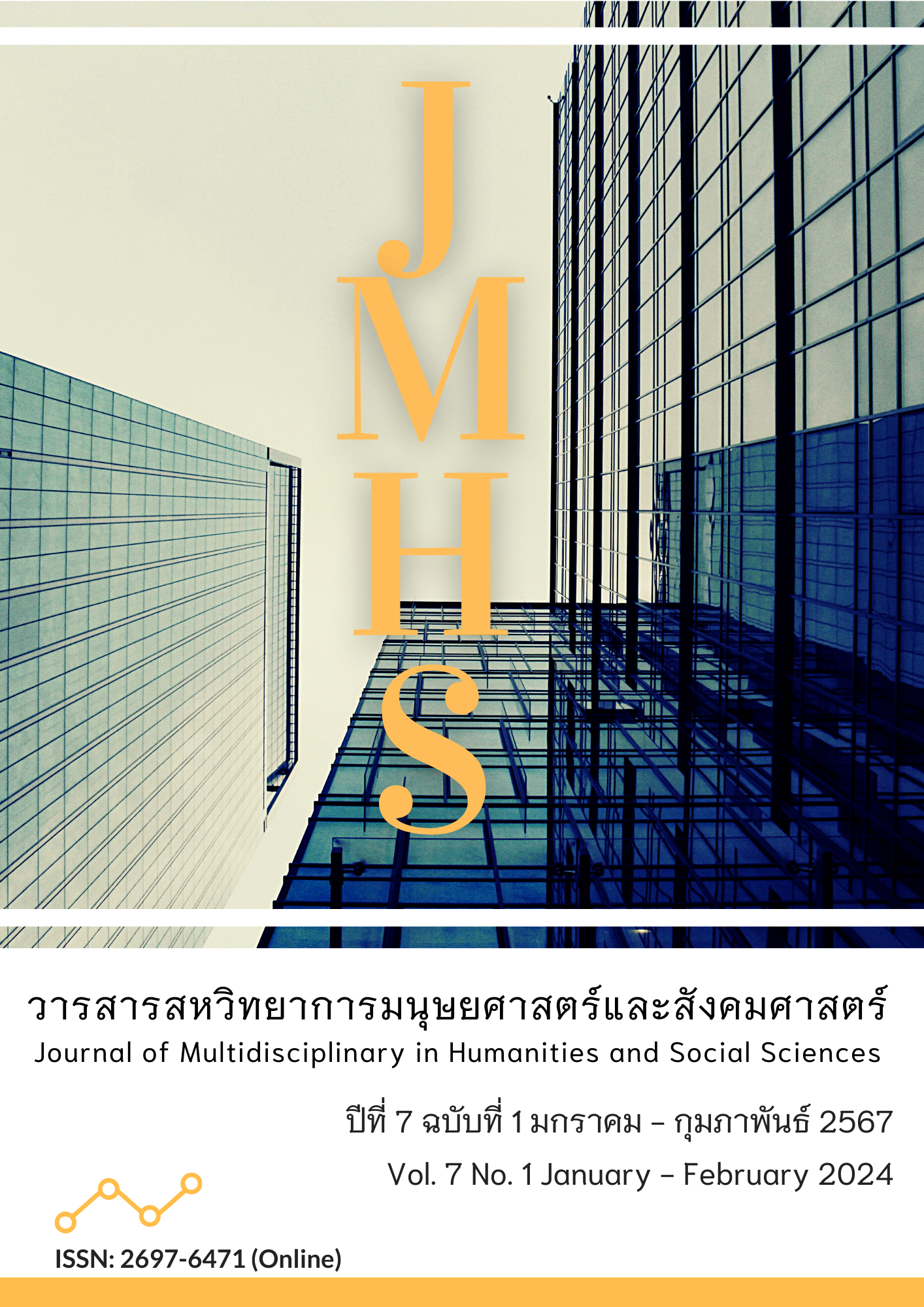The Efficiency of Collect Production and Processing Business of Dairy Cooperative in Saraburi Province
Main Article Content
Abstract
This paper aimed to explore the efficiency of the milk collected by nine dairy cooperatives in Saraburi province. The research employed the Data Envelopment Analysis technique (DEA) to explore the efficiency of the collected milk of dairy cooperatives between 2017-2021. The study set two input factors: fixed assets and the expense of dairy cooperatives. The output factor is comprised of the quantity of milk collected by dairy cooperatives and the income of dairy cooperatives. It was found that:
In terms of collecting milk from dairy cooperatives, all 9 dairy cooperatives had 45 DMU. There were 12 DMU in the stage of increasing return to scale, and 3 DMU were in the stage of constant return to scale (2 dairy cooperatives). In addition, the dairy cooperative that has the most efficiency is the one that doesn’t have a processing factory but collects milk from its members and sends it directly to the supplier. As a result, we should remind them about the policy to promote the dairy cooperatives to have the processing factory by themselves because of the cost of investment and need to consider other factors such as marketing, the cost of production, the environment factor, and the cow disease as well. Thus, the government agency needs to be careful about the policy of the dairy cooperative, as mentioned above.
Article Details

This work is licensed under a Creative Commons Attribution-NonCommercial-NoDerivatives 4.0 International License.
Views and opinions appearing in the Journal it is the responsibility of the author of the article, and does not constitute the view and responsibility of the editorial team.
References
กรมวิชาการเกษตร. (2562). เทคนิคการส่งเสริมการเลี้ยงโคนม. กรุงเทพฯ: โรงพิมพ์ชุมนุมการเกษตรแห่งประเทศไทย.
จักรพันธ์ สุขสวัสดิ์ และ วินัย พุธกูล. (2550). ประสิทธิภาพทางเทคนิคและประสิทธิภาพต่อขนาดศูนย์รวบรวมน้ำนมดิบในประเทศไทย. วารสารเศรษฐศาสตร์ มหาวิทยาลัยเกษตรศาสตร์, 14(1), 47-59.
ณคุณ ธรณีนิติญาณ. (2565). การวิเคราะห์ประสิทธิภาพทางเทคนิคของสหกรณ์กองทุนสวนยางโดยใช้วิธี Meta-Frontier Analysis. วารสารบริหารธุรกิจ, 45(176), 24-43.
ทิพวรรณ แววทอง. (2557). ปัจจัยที่มีผลต่อปริมาณน้ำนมดิบในฟาร์มโคนมของเกษตรกรที่เป็นสมาชิกสหกรณ์โคนมมวกเหล็กจำกัด จังหวัดสระบุรี(วิทยานิพนธ์วิทยาศาสตรบัณฑิต). มหาวิทยาลัยเกษตรศาสตร์.
ธีร์วรัญญ์ ชื่นธีรพงศ์ และ ณคุณ ธรณีนิติญาณ. (2566). การวิเคราะห์ประสิทธิภาพทางเทคนิคของสหกรณ์ออมทรัพย์ครูในประเทศไทย. วารสารสังคมศาสตร์ปัญญาพัฒน์, 5(1), 87-98.
ภรภัทร ไชยสมบัติ และ นราวุธ ระพันธ์คำ. (2562). ปัจจัยที่มีผลต่อต้นทุนการผลิตน้ำนมดิบของเกษตรกรในจังหวัดสกลนคร. วารสารเกษตรพระวรุณ, 16(1), 142–153.
วสันตนาวิน หรินทร์ปพนวิช, ฮาซียะห์ ดอรอแซ, อัลอามีน มะแต และ จารินี วัฒนไทย. (2562). ประสิทธิภาพการดำเนินงานของสหกรณ์อิสลามในเขตสามจังหวัดชายแดนภาคใต้ของประเทศไทย. สืบค้นเมื่อ 11 มิถุนายน 2565, จาก https://profile.yru.ac.th/storage/academic-articles /October2020/rcBnqQOo3oVhv1AnQewN.pdf
สุภาวดี แหยมคง, ธนาทิพย์ สุวรรณโสภี และ ศกร คุณวุฒิฤทธิรณ. (2555). ปัจจัยที่มีอิทธิพลต่อองค์ประกอบน้ำนมดิบที่ผลิตโดยสมาชิกของศูนย์รวบรวมน้ำนมดิบเอกชนแห่งหนึ่งในเขตภาคกลางของประเทศไทย. สืบค้นเมื่อ 11 มิถุนายน 2565, จาก https://kukr.lib.ku.ac.th/kukr_es/index.php?/BKN/search_detail/result/10837
สำนักงานเกษตรและสหกรณ์จังหวัดสระบุรี. (2564). ข้อมูลเพื่อการวางแผนพัฒนาการเกษตรรายการสินค้าของจังหวัดสระบุรี. สืบค้นเมื่อ 11 มิถุนายน 2565, จาก https://shorturl.asia/ZPlGj
อรรถพล สืบพงศกร. (2555). ระเบียบวิธีการของ Data Envelopment Analysis (DEA) และการวัดประสิทธิภาพเชิงเทคนิค. วารสารเศรษฐกิจมหาวิทยาลัยเชียงใหม่, 16(1), 50-88.
อรรถพล สืบพงศกร. (2564). การตรวจสอบประสิทธิภาพธุรกิจโรงแรมในประเทศไทยในช่วง COVID-19. วารสารวิชาการคณะบริหารธุรกิจ มหาวิทยาลัยเทคโนโลยีราชมงคลธัญบุรี, 18(1), 1-25.


